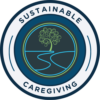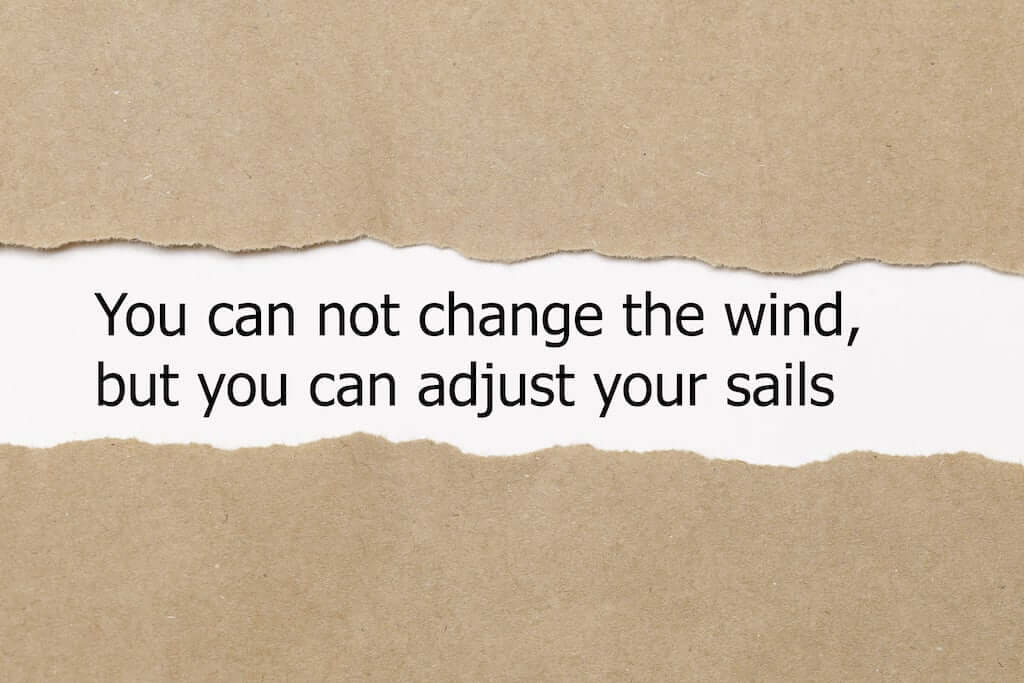From experience, I knew that the palliative care provided by a hospice agency could be an empowering resource to maintain quality of life at home for what could extend to years. I was aware that while some families involved hospice care at end of a family member’s life, their services extended far beyond, actually prior to, a patient’s final days. This option had not been a previous consideration for Dad’s care because we were managing well enough on our own, until COVID-19. The first reason to consider hospice was that we were no longer managing well on our own in part because Dad was not able to comprehend the significance of social distancing. And, what if at some point, he did need medical care.
Isolation was not sustainable
My husband and I were practicing physical distancing and we stopped folks, including our caregiving aide, from visiting Dad. It wasn’t an easy decision. From that point, we were his only human contacts. At 98, he watched the news and followed the progression of COVID-19, but didn’t grasp the details. He understood the words, but not the meaning.
He decided it was time for his physical and would not be deterred from attempting to make the appointment. Since he frequently created a reason to see his PCP, most visits were primarily social and Dad always felt better, reassured, after spending time with Dr G. Currently, he had a list of other non-urgent issues and repeatedly insisted that he and/or we do something that would put us at risk of contracting the virus. I realized that keeping him from visiting a doctor was not going to be sustainable. The second reason I wanted Hospice involved is because I feared that regardless of our plan and good intentions, Dad might still catch the virus.
Pandemic
My husband and I started to prepare for the coronavirus weeks before toilet paper became scarce. We saw the risk to the elderly population in China and how quickly it was spreading through Europe and we made a plan. We stocked up on food and prepared to stop all visitors. After we settled into the plan, the next consideration was that the virus could slip through the cracks. We discussed the realities with Dad. He had a living will and simply did not want to go to a hospital if he were to develop symptoms. I had read about the details of dying in respiratory distress and could not imagine him going through it nor us standing by helpless. We needed a next level plan. I only knew of one organization that could answer my questions and give me the information I needed to be prepared.
Mom and hospice
Thirteen years ago, Joe and I were living in France when Mom went on dialysis. During a visit home, I was frantically trying to coordinate care for her. Dad was afraid, paralyzed and uncharacteristically checked out. I talked to home care companies and life care managers, then known as geriatric care managers. I talked to other agencies about transportation, medicine management and help with shopping and meals. At wits end, I went into the Hospice welcome center looking for advice. I was clear that I was not there to inquire about services. After hearing the details of our situation, the hospice representative respectfully said that she thought the organization could help us. The hospice center offered services and support well beyond what I could have hoped to establish for Mom.
Dad and hospice
A week ago I went to the same center, Suncoast Hospice, a non-profit organization that has extensive volunteer and financial support in the area due to a history of incredible care. I went in to request advice and after asking my questions, before hearing a response, I knew that there was only one answer. I asked how to proceed.
The conversation with Dad
What I shared
When I approached Dad with the idea, I was very trepidatious, but tried not to let it show. One of the most memorable arguments in our past was when I told him that a Hospice nurse was going to evaluate Mom. I ran the main points around in my head for a day and was finally ready to proceed by focussing on these points:
- Since you do not want to go to the hospital, I need help managing what may happen if you get COVID-19.
- There is a temporary solution that will help me manage things if you do get the virus. We can discontinue their services after things settle down and vaccines are in place.
- There is a part of Hospice that provides more than just end of life care. The team of nurses are the eyes and ears of the doctor when you can’t go into the office for an appointment.
- Dr. G will still be your PCP. A nurse will come to you and share the information with Dr. G.
- If you are sick and in pain and I don’t know what to do, I can call them. They are available 24 hours a day.
What I did not share
There were additional reasons that I requested the evaluation and wanted to get Hospice involved, but these reasons would not have resonated with Dad. The more focused the conversation, the easier for him to understand, so I left these points out of our conversation.
- Hospice caregivers manage the symptoms of the disease to keep the person comfortable and better able to breathe. This includes morphine, which we would not otherwise have access to or know how to administer without the training they will provide.
- If a family member dies at home, there is an investigation. It is treated like a crime scene. If Hospice is involved, it is managed differently, without the drama and the insensitivity.
- If history is any indication, Dad will likely insist that he see his PCP and other doctors regardless of the risk. It will be helpful to have a nurse reinforcing that he not put himself at more risk.
- The services include home care such as bathing and help dressing. Also, volunteers will come and sit with the patient. We will need this help down the road.
My reservations
I had my own concerns about adding a layer of care and more people into our lives.
- This will be disruptive. More visitors.
- How will his medication management change?
- Will we lose control over how we manage certain aspects of his care?
- Will we be judged by how we manage certain aspects of his care?
- I’ll need to be selective and develop a way to share this with family members that won’t cause unnecessary alarm.
- Will the Hospice care team bring the virus to us?
- Am I making a mistake?
My greatest worry
Dad’s PCP still hasn’t asked to follow Dad’s case.
I am trying not to worry:
- That Dr G hasn’t responded because he is disappointed in our decision
- That he will decide not to follow Dad’s case
- That if he doesn’t follow, I will have to explain to Dad why he won’t see him again
- About Dad saying that not seeing Dr. Goldstein is a deal breaker
I am trying not to worry.
In conclusion
During this time in uncharted territory, our decisions and actions are taking an enormous emotional toll. I don’t think we will fully realize the impact because we are so focused on what we can do to help family members stay safe. After sitting with the choice and letting it wind itself into our new reality, I know it was the right decision for Dad and for our situation.
All Sustainable Caregiving™ services are currently free. Go to SustainableCaregiving.com to schedule a one-on-one, family caregiver consultation. We will discuss your current worries and begin to make a plan. Also, check back frequently for the opportunity to join a Zoom meeting where each participant will have an opportunity to share concerns, plans and advice. There will be a variety of Caregiver Connect and Chat times offered.
Navigating the Caregiver River: A Journey to Sustainable Caregiving is available on Amazon. Also, check out the Self-Caregiving Strategies Podcast.
Schedule Theresa Wilbanks to speak on caregiving and empower the caregivers in your workplace or community with the 12 Sustainable Caregiving Strategies.
Advice offered is for general information only; please contact your healthcare team, legal or financial advisors to guide your particular situation.


Pingback: Isolation 2.0 - Sustainable Caregiving™